FAQ - Advanced Bathroom Queries
When You Flush Toilet Where Does It Go

Ever curious about the destination of the water you flush down the toilet? It takes on an intriguing journey, starting from the toilet bowl to the drainage system, traversing complex plumbing networks and subterranean routes.
Eventually, it reaches the sewer system and makes its way to a treatment plant, where it undergoes a meticulous process. In this article, we will explore the intricate details of this journey, shedding light on the final destination of treated water and the proper management of solid waste.
Get ready to delve into the world of wastewater management.
Key Takeaways
- Flushing the toilet initiates the waste disposal process and the waste combines with wastewater from other sources in the sewer system.
- Sewage undergoes processes at treatment plants to remove harmful contaminants through primary and secondary treatment, as well as disinfection.
- Improper sewage disposal can lead to water pollution, ecosystem disruption, and the death of aquatic life.
- Effective sewage treatment methods and proper maintenance of the plumbing system are crucial to minimize environmental impacts and ensure water efficiency.
The Journey Begins: From Toilet Bowl to Drain
When we flush the toilet, the water and waste travel from the toilet bowl to the drain. This marks the beginning of the waste disposal process, which involves a series of sewage treatment methods.

After flushing, gravity and water pressure help the waste move through the pipes towards the municipal sewer system or septic tank. In the sewer system, the waste flows through a network of underground pipes, where it combines with wastewater from other sources.
The sewage treatment methods vary, but they typically include physical, biological, and chemical processes to remove impurities and harmful substances from the wastewater. This ensures that the water is treated before being released back into the environment, while solid waste is further processed or disposed of safely.
Understanding this journey helps us appreciate the importance of proper waste disposal and the role of sewage treatment methods in maintaining a clean and healthy environment.
Into the Pipes: The Plumbing System Unveiled
When it comes to the plumbing system, there are three main points to consider:
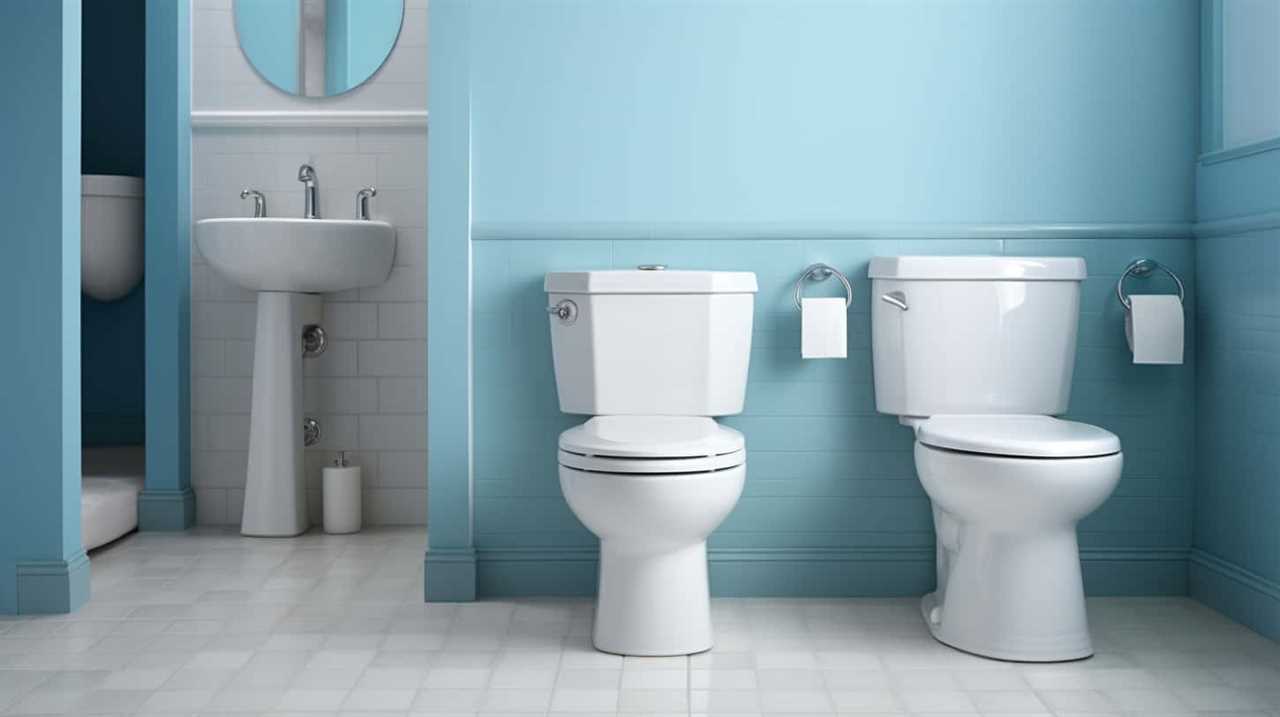
- The waste disposal process: Understanding how waste is transported through the pipes and eventually treated is crucial for maintaining a functional plumbing system.
- Sewage treatment methods: It is important to be aware of the different methods used to treat sewage, as this can affect the overall efficiency and effectiveness of the plumbing system.
- The importance of proper maintenance: By following proper maintenance practices, we can ensure the longevity and efficiency of our plumbing system, preventing potential issues and costly repairs in the future.
Waste Disposal Process
To understand the waste disposal process, let’s delve into the fascinating world of plumbing. Waste disposal methods and waste management techniques are crucial aspects of maintaining proper sanitation and hygiene.
When you flush the toilet, the waste travels through a series of pipes and ultimately ends up at a wastewater treatment plant. The plumbing system in your home or building plays a vital role in this process. It ensures that the waste is efficiently transported away from your living space and into the sewer system.
The pipes are designed to carry the waste without any leaks or blockages. The plumbing system is carefully engineered to ensure that the waste is disposed of properly and safely.
Sewage Treatment Methods
Once the waste from the toilet is flushed, it enters into and travels through a complex network of pipes that transport it to the wastewater treatment plant.

At the treatment plant, the sewage undergoes a series of processes to remove harmful contaminants and make it safe for disposal or reuse.
The first step in the treatment process is called primary treatment, where solid materials are removed through sedimentation and filtration.
Next, the water undergoes secondary treatment, which involves the use of biological processes to break down organic matter and remove dissolved contaminants.
After secondary treatment, the water goes through disinfection to kill any remaining bacteria and pathogens.
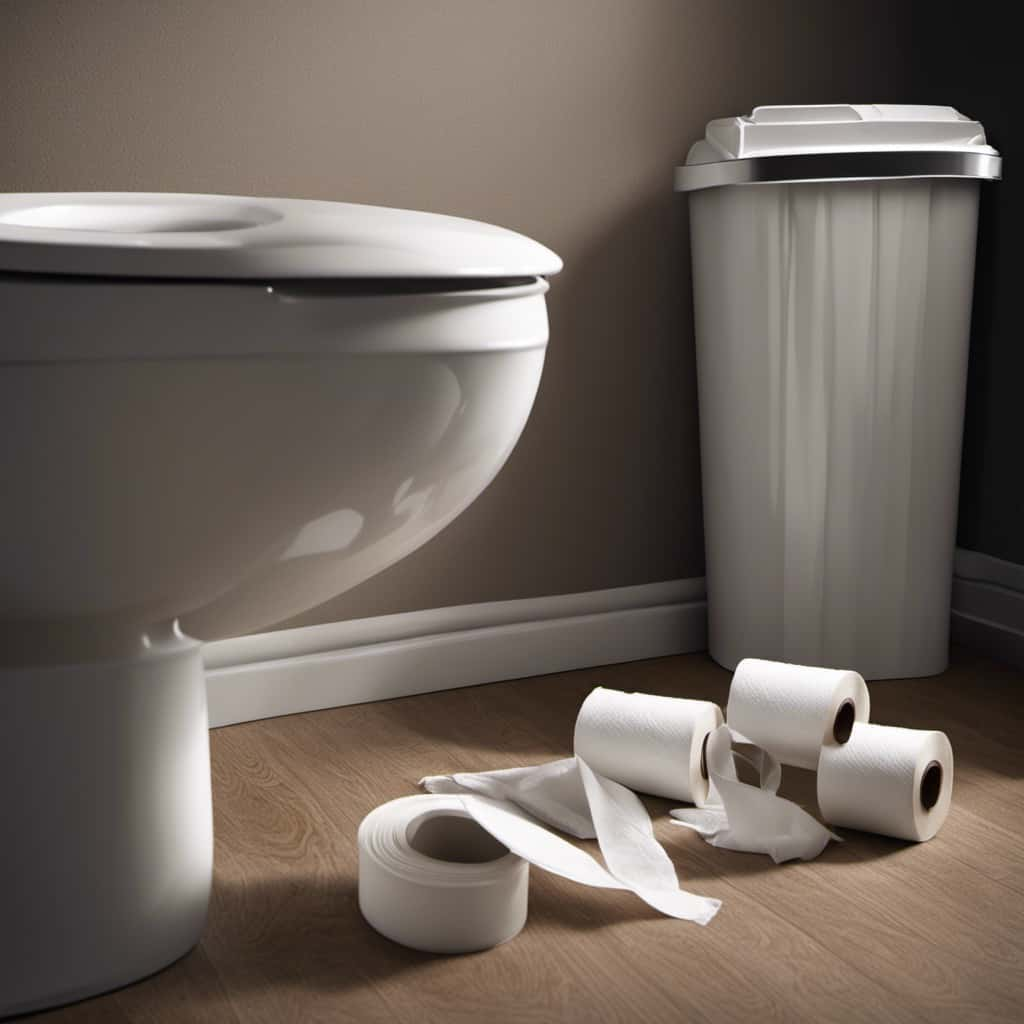
Finally, the treated water is discharged into nearby water bodies or used for various purposes such as irrigation or industrial processes.
This comprehensive sewage treatment process ensures that water is treated effectively and safely for disposal, protecting both human health and the environment.
Importance of Proper Maintenance
After the waste from the toilet is transported to the wastewater treatment plant, it’s important for proper maintenance of the plumbing system to be prioritized. Regular inspection of the plumbing system is crucial to ensure its optimal functionality and prevent any potential issues. Here are the benefits of professional maintenance:
- Early detection of problems: Professionals can identify and address any plumbing issues before they escalate into major problems. This helps to minimize the risk of costly repairs or replacements in the future.
- Increased lifespan of the plumbing system: Regular maintenance ensures that the pipes, fixtures, and other components of the plumbing system are well-maintained and functioning properly. This can extend the lifespan of the system, saving you money in the long run.
- Improved water efficiency: A well-maintained plumbing system is more efficient, reducing water wastage and lowering utility bills. Professionals can identify and fix any leaks or inefficiencies, ensuring that your plumbing system operates at its best.
Making Its Way to the Sewer System
Now that we understand how waste is transported through the plumbing system, let’s examine how it makes its way to the sewer system.
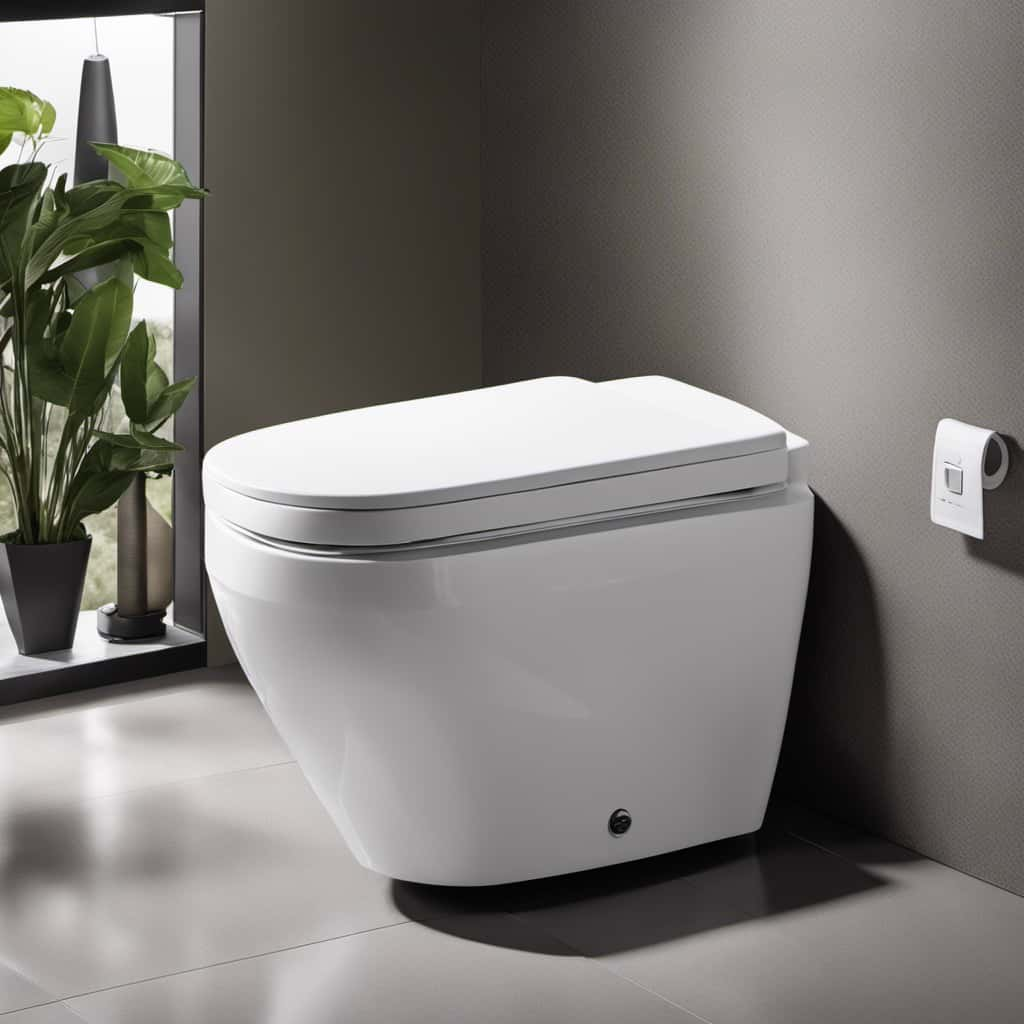
The waste disposal process involves the transfer of sewage from individual households and businesses to a centralized sewer system. Once in the sewer system, various sewage treatment methods are employed to remove contaminants and ensure the water is safe for disposal or reuse.
It’s important to consider the environmental impacts of sewage, as improper treatment and disposal can lead to pollution of water bodies and harm to ecosystems.
Waste Disposal Process
We flush the toilet, and our waste begins its journey through the waste disposal process, making its way to the sewer system. Here is a step-by-step explanation of how this process unfolds:
- Collection: After flushing, the waste travels through the plumbing system in our homes, joining a network of pipes that connect to the main sewer line.
- Transportation: The waste is then transported through the sewer system, using gravity or pumps, depending on the topography of the area. It moves through a network of pipes, gradually making its way to a wastewater treatment plant.
- Water Treatment: Once at the treatment plant, the waste undergoes a series of rigorous processes to remove contaminants and pollutants. These include physical, chemical, and biological treatments, such as screening, sedimentation, and disinfection. The treated water is then released back into the environment.
Understanding the waste disposal process is essential for maintaining proper sanitation and protecting our environment.

Sewage Treatment Methods
Our waste, along with the waste from other households, is collected and transported through a network of pipes to the sewer system. Once it reaches the sewer system, the sewage goes through a series of treatment methods to ensure proper water purification and sewage disposal.
The first step in the process is called primary treatment, where large objects and solids are removed from the sewage through screening and sedimentation.
Then, the sewage undergoes secondary treatment, which involves the use of bacteria to break down organic matter and remove any remaining solids.
Next, the treated water goes through a disinfection process to kill any harmful bacteria or viruses.

Finally, the water is discharged into a receiving body of water or it can be further treated for reuse.
This comprehensive sewage treatment process ensures that our waste is properly managed and that the water we use is purified before being returned to the environment.
Environmental Impacts of Sewage
As sewage makes its way to the sewer system, it can have significant environmental impacts. The improper disposal of sewage can lead to water pollution and ecosystem disruption. Here are three ways in which sewage can harm the environment:
- Contamination of water bodies: When sewage is discharged into rivers, lakes, or oceans without proper treatment, it introduces harmful bacteria, viruses, and chemicals into the water. This can lead to the spread of diseases and the death of aquatic organisms.
- Nutrient imbalance: Sewage contains high levels of nutrients such as nitrogen and phosphorus. When these nutrients enter water bodies, they can cause excessive growth of algae, leading to oxygen depletion and the death of fish and other aquatic life.
- Habitat destruction: Sewage discharges can alter the physical and chemical properties of the environment, destroying habitats for plants and animals. This disruption can have long-lasting effects on the delicate balance of ecosystems.
It is crucial to implement effective sewage treatment methods to minimize these environmental impacts and protect our natural resources.

Underground Pathways: Navigating the Sewer Lines
Navigating the sewer lines involves understanding the intricate pathways that wastewater takes underground. The underground infrastructure consists of a network of pipes and tunnels that transport sewage from homes and businesses to treatment plants. Maintaining this sewage network is crucial to ensure the proper functioning of the system. Regular maintenance includes inspecting and repairing any damaged pipes, clearing blockages, and ensuring the flow of wastewater is uninterrupted.
To navigate the sewer lines effectively, professionals use specialized equipment such as cameras and robotic devices to assess the condition of the pipes and identify any potential issues. This meticulous approach ensures that the wastewater can flow smoothly and reach its destination for treatment.
Now, let’s take a closer look at what happens when the wastewater arrives at the treatment plant.
Treatment Plant Arrival: A Glimpse Inside
As we arrive at the treatment plant, we witness the intricate process of waste purification. Our focus is on understanding the environmental impact considerations and the water recycling techniques employed here.

This glimpse inside the treatment plant gives us a deeper understanding of how our waste is transformed into a more sustainable and reusable resource.
Waste Purification Process
When we flush the toilet, the waste travels through the sewage pipes to the treatment plant. Once it arrives at the treatment plant, the waste undergoes a rigorous purification process to ensure safe disposal.
Here is a glimpse inside the waste purification process:
- Screening: The wastewater is first passed through screens to remove large debris such as sticks, plastic, and other solid objects.
- Sedimentation: The wastewater then enters large tanks where solid particles settle to the bottom, forming a layer of sludge.
- Biological Treatment: In this stage, microorganisms are introduced to break down organic matter in the wastewater. Oxygen is supplied to facilitate the growth of these microorganisms, which further purify the water.
Environmental Impact Considerations
Upon arrival at the treatment plant, we assess the environmental impact considerations of the waste purification process. It is crucial to understand the potential consequences of treating and disposing of wastewater to ensure the protection of our ecosystem health and prevent water pollution.

To illustrate the environmental impact considerations, we have provided a table below:
| Consideration | Description |
|---|---|
| Water Pollution | Evaluating the extent of pollutants present in the wastewater and their potential harm to aquatic life and water quality. |
| Ecosystem Health | Assessing the impact of treated effluent on the surrounding environment and the health of plants, animals, and microorganisms. |
Water Recycling Techniques
At the treatment plant, we employ various water recycling techniques to ensure the efficient and sustainable purification of wastewater. These techniques are crucial in addressing the pressing issues of water scarcity and promoting water conservation.
Here are three key techniques we use:
- Physical Treatment: The wastewater undergoes a series of physical processes, such as screening and sedimentation, to remove large debris and settle suspended solids.
- Biological Treatment: In this stage, microorganisms are introduced to break down organic matter present in the wastewater. This process, called activated sludge treatment, helps remove pollutants and nutrients.
- Chemical Treatment: To further purify the water, chemicals like chlorine or ozone are added to disinfect and eliminate any remaining bacteria and pathogens.
Primary Treatment: Removing Solid Waste
We remove solid waste during primary treatment by using a combination of physical and biological processes. The primary treatment phase is an essential part of the waste disposal process, as it focuses on removing large solid particles from the wastewater.

In this phase, the wastewater undergoes a series of steps to separate the solid waste from the liquid. The first step involves screening, where large objects like rags, plastics, and debris are removed using screens or grates.
After screening, the wastewater flows into settling tanks, allowing the heavier solid particles to settle at the bottom. These settled solids, known as sludge, are then scraped and removed for further treatment.
Once the solid waste is removed, the treated wastewater moves on to the next phase, which is the secondary treatment, where the focus is on breaking down organic matter.
Secondary Treatment: Breaking Down Organic Matter
When it comes to breaking down organic matter in the secondary treatment process, there are several key points to consider.
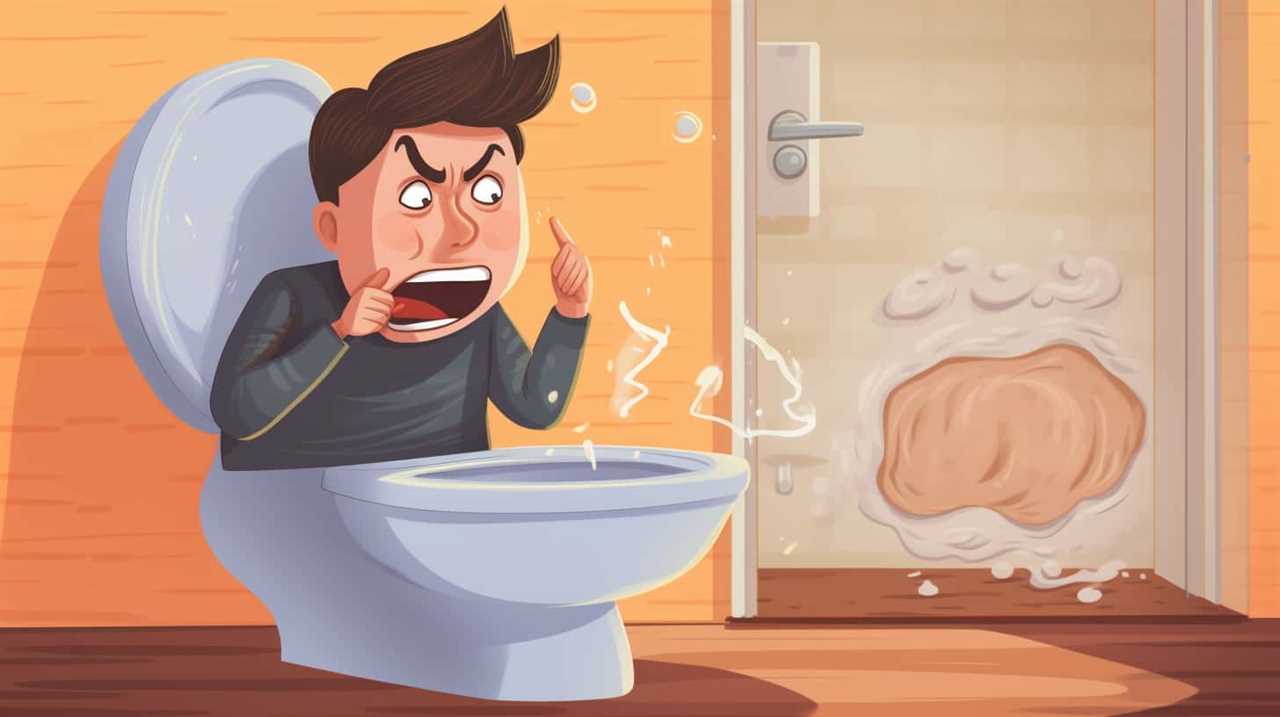
Firstly, this process involves the decomposition of organic materials through the use of microorganisms. These microorganisms play a crucial role in breaking down the organic matter into simpler compounds.
This process not only helps to remove harmful pollutants, but it also has positive environmental impacts, such as reducing the release of greenhouse gases and creating nutrient-rich byproducts that can be used as fertilizers.
Organic Matter Decomposition Process
During the organic matter decomposition process, bacteria and other microorganisms actively break down the waste flushed down the toilet. This waste decomposition process involves several steps that efficiently break down organic matter. Here is a list of the stages involved:
- Hydrolysis: Enzymes secreted by bacteria break down complex organic molecules into smaller components, such as proteins, carbohydrates, and fats.
- Acidogenesis: Acid-producing bacteria further break down these smaller components into simpler compounds like fatty acids, alcohols, and organic acids.
- Methanogenesis: Methanogenic bacteria convert these simpler compounds into methane gas and carbon dioxide through a process called methanogenesis.
These stages work synergistically to decompose the organic matter in the waste, transforming it into environmentally safe byproducts.

This efficient process is essential for maintaining proper sanitation and preventing the accumulation of harmful substances in our wastewater systems.
Role of Microorganisms
One important aspect of the wastewater treatment process involves the use of microorganisms to break down organic matter. Microbial digestion plays a crucial role in the secondary treatment phase, where the focus is on removing dissolved and suspended organic materials. This process helps to further break down the waste and convert it into simpler compounds that can be easily removed from the water.
To better understand the role of microorganisms in waste decomposition, let’s take a look at the following table:
| Microorganisms | Function | Examples |
|---|---|---|
| Bacteria | Breaking down complex organic compounds | Escherichia coli, Bacillus subtilis |
| Fungi | Decomposing cellulose and lignin | Aspergillus niger, Trichoderma reesei |
| Protozoa | Feeding on bacteria and other organic particles | Amoeba proteus, Paramecium caudatum |
These microorganisms work together to efficiently break down the organic matter present in wastewater, aiding in its treatment and ensuring cleaner water is returned to the environment. Their ability to digest and decompose waste is a vital part of the wastewater treatment process.

Environmental Impact and Benefits
The breaking down of organic matter through microbial digestion in the secondary treatment phase of wastewater plays a crucial role in minimizing the environmental impact and providing numerous benefits. This process not only helps in water conservation by reducing the amount of water needed for irrigation, but also prevents pollution by removing harmful pollutants from the wastewater.
Here are three key benefits of secondary treatment:
- Reduced Environmental Impact: Through the breakdown of organic matter, secondary treatment significantly reduces the amount of nutrients and contaminants that would otherwise be released into the environment, protecting water bodies and ecosystems.
- Improved Water Quality: By removing organic matter and contaminants, secondary treatment improves the quality of the treated water, making it safer for reuse or discharge into water bodies.
- Health Protection: Secondary treatment reduces the risk of waterborne diseases by eliminating pathogens and harmful bacteria from the wastewater.
As we move on to the subsequent section about tertiary treatment, we’ll explore how this final stage further polishes the effluent to meet even higher water quality standards.
Tertiary Treatment: Polishing the Effluent
After the wastewater goes through the secondary treatment process, it moves on to the next stage known as tertiary treatment, where the effluent is further polished. Tertiary treatment is a crucial step in water purification, ensuring that the effluent quality meets the highest standards before it’s released back into the environment.

During this stage, advanced treatment methods are employed to remove any remaining impurities, such as fine particles, dissolved organic matter, and nutrients. This is done through processes like filtration, disinfection, and advanced oxidation. These techniques play a vital role in improving the overall quality of the effluent and reducing the potential environmental impact.
As the effluent undergoes tertiary treatment, it becomes increasingly purified, preparing it for the final step in the treatment process: disinfection. This transition from tertiary treatment to disinfection is facilitated by the presence of bacteria, which play a crucial role in breaking down organic matter and aiding in the removal of pathogens.
The Role of Bacteria in the Treatment Process
During tertiary treatment, bacteria play a vital role in breaking down organic matter and aiding in the removal of pathogens. The effectiveness of microbial treatment is dependent on the presence of specific bacteria that possess the ability to degrade complex organic compounds. Here are three key ways in which bacteria contribute to the treatment process:
- Biodegradation: Bacteria utilize organic matter as a food source and break it down into simpler compounds through enzymatic reactions. This process reduces the concentration of pollutants and eliminates harmful substances.
- Nutrient Cycling: Bacteria play a crucial role in recycling essential nutrients, such as nitrogen and phosphorus. They convert these compounds into forms that can be taken up by plants, promoting the growth of aquatic vegetation and maintaining ecological balance.
- Pathogen Removal: Certain bacteria have the capacity to consume and neutralize pathogens present in wastewater. Through predation and competition for resources, these bacteria help eliminate disease-causing organisms, making the water safer for reuse or discharge.
Understanding the bacteria’s role in the treatment process is fundamental for optimizing wastewater treatment systems and ensuring the production of clean, safe water.
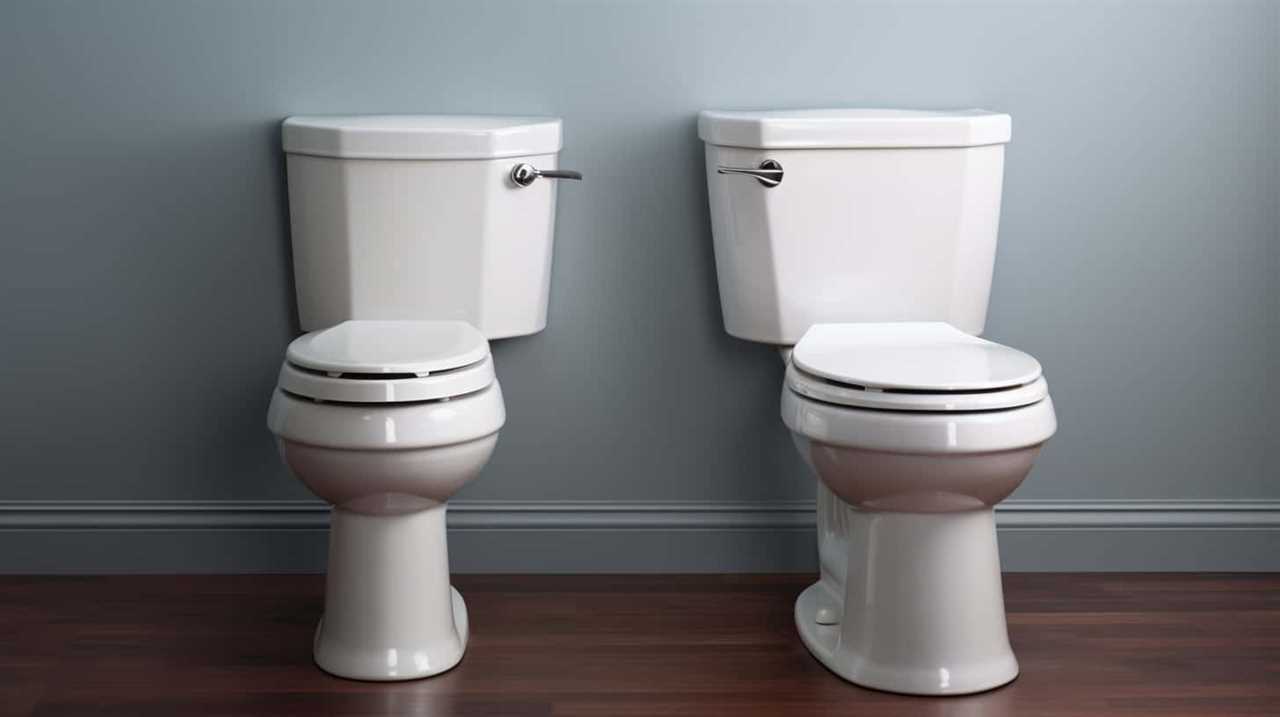
Disinfection: Eliminating Harmful Pathogens
Continuing from our previous discussion on the role of bacteria in the treatment process, let’s now delve into the important task of disinfection: eliminating harmful pathogens.
Disinfection methods play a crucial role in ensuring that treated wastewater meets the necessary water quality standards. These methods involve the use of various chemical, physical, and biological processes to target and destroy harmful microorganisms present in the wastewater.
Common disinfection methods include chlorination, ultraviolet (UV) radiation, and ozonation. Chlorination, the most widely used method, involves the addition of chlorine to the wastewater to kill bacteria, viruses, and other pathogens.
UV radiation utilizes ultraviolet light to disrupt the DNA of microorganisms, rendering them unable to reproduce.

Ozonation, on the other hand, employs ozone gas to oxidize and destroy harmful organisms.
These disinfection methods are carefully regulated to ensure that the water quality standards are met and that the treated water is safe for reuse or discharge into the environment.
The Final Destination: Where Does the Treated Water Go
Once the harmful pathogens have been eliminated through disinfection methods, we can now explore the final destination of the treated water. The goal of water reclamation is to take this once contaminated water and transform it into a resource that can be reused in a sustainable manner. Here is a glimpse into where the treated water goes:
- Irrigation: One common use for reclaimed water is irrigation. It can be used to water crops, parks, and golf courses, reducing the need for freshwater sources.
- Industrial Processes: Reclaimed water can also be used in various industrial processes, such as cooling systems or manufacturing. This reduces the demand for freshwater in these industries.
- Groundwater Recharge: In some cases, treated water is injected into the ground to replenish groundwater supplies. This helps maintain the balance of aquifers and supports overall water sustainability.
Reclaimed Water: Potential Uses and Benefits
After exploring the final destination of treated water, let’s now delve into the potential uses and benefits of reclaimed water.

Reclaimed water, also known as recycled water or wastewater, is treated sewage water that has undergone a rigorous purification process to remove impurities and contaminants. This process allows reclaimed water to be reused for various purposes, contributing to water conservation efforts.
One of the main benefits of water reuse is its potential for irrigation. Reclaimed water can be used for watering crops, parks, and golf courses, reducing the demand for freshwater resources.
Additionally, reclaimed water can be utilized in industrial processes, such as cooling systems and manufacturing processes. This helps conserve freshwater resources and reduces the strain on the environment.
Biosolids: What Happens to the Solid Waste
When we flush the toilet, the solid waste goes through a process called biosolids management to determine its final destination. Biosolids management involves several steps to ensure proper handling and treatment of solid waste. Here is a breakdown of what happens to the solid waste during this process:

- Thickening: The first step is to remove excess water from the waste, which is done through thickening. This reduces the volume and makes it easier to handle.
- Stabilization: The thickened waste is then treated to stabilize it, ensuring that any harmful pathogens are destroyed. This is typically done through processes such as anaerobic digestion or composting.
- Nutrient recovery: After stabilization, the waste is further processed to recover valuable nutrients such as nitrogen and phosphorus. These nutrients can then be used as fertilizers in agriculture or other applications.
By properly managing biosolids, we can minimize environmental impact and maximize the potential benefits of solid waste.
Now, let’s explore the importance of proper waste management and its impact on the environment.
Environmental Impact: The Importance of Proper Waste Management
To understand the environmental impact of proper waste management, let’s explore how our actions can minimize harm and maximize benefits.
Water pollution is a significant concern when it comes to waste management. Improper disposal and treatment of waste can lead to the contamination of water sources, causing harm to aquatic ecosystems and posing risks to human health. Sustainable practices are crucial in mitigating these risks and ensuring the long-term health and well-being of our environment.

By implementing effective waste management strategies, such as proper sewage treatment and recycling systems, we can reduce the amount of waste that ends up in our waterways. This not only protects the quality of our water resources but also promotes the conservation of natural resources and the preservation of biodiversity.
It’s our responsibility to adopt sustainable waste management practices to minimize water pollution and safeguard our planet for future generations.
Conclusion
In conclusion, understanding the journey of where our flushed waste goes is crucial for proper waste management.
Did you know that each flush can use up to 3.5 gallons of water? That’s equivalent to 26 water bottles!
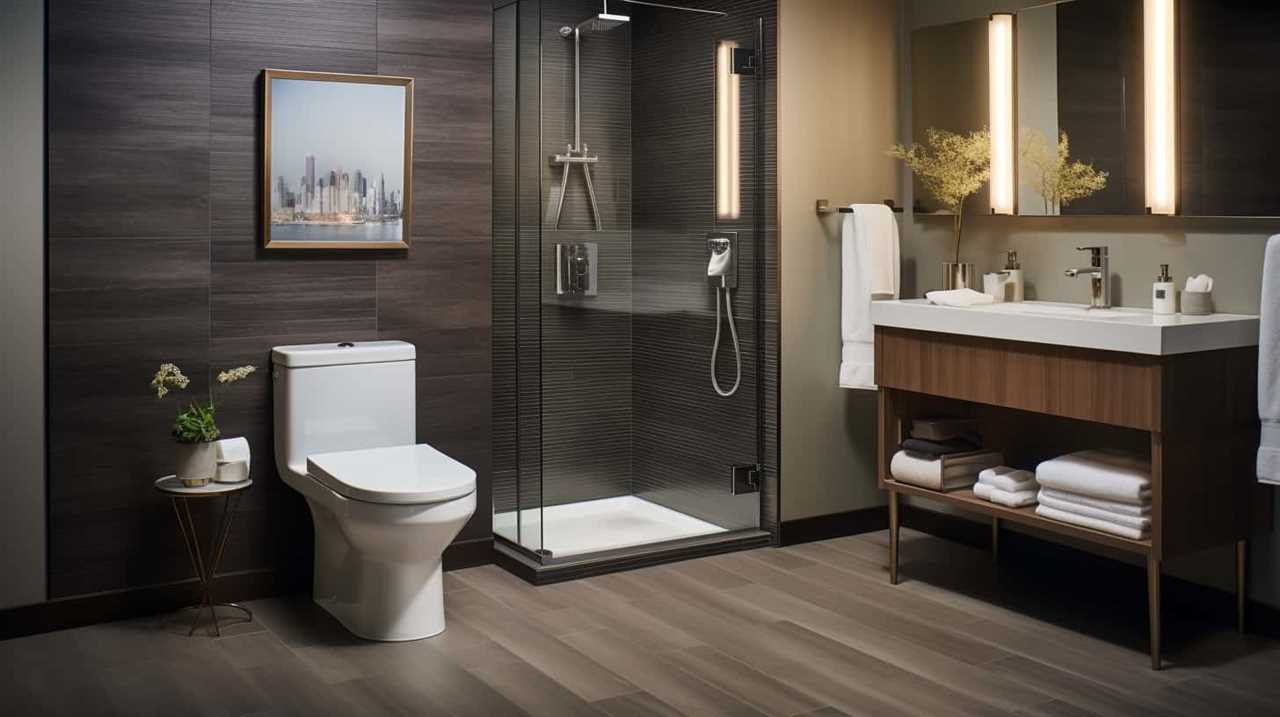
By learning about the intricate process from the toilet bowl to the treatment plant, we can appreciate the importance of conserving water and ensuring that our waste is properly treated and managed.
Let’s all do our part in preserving our environment for future generations.
With an impeccable eye for detail and a passion for bathroom-related, Ava leads our editorial team gracefully and precisely.
Under her guidance, Best Modern Toilet has flourished as the go-to resource for modern bathroom enthusiasts. In her free time, you might find Ava exploring antique shops and looking for vintage bathroom fixtures to add to her collection.
FAQ - Advanced Bathroom Queries
Where Can You Not Flush Toilet Paper

We’ve all experienced it – facing a toilet, pondering whether we should flush that bundle of toilet paper or not.
Well, here’s a surprising fact: in some places, you can’t flush it at all! From public restrooms to older plumbing systems, there are several situations where tossing that tissue down the drain is a big no-no.
In this article, we’ll explore where you can and can’t flush toilet paper, so you never find yourself in a messy situation again.
Key Takeaways
- Flushing toilet paper in public restrooms can have severe environmental impacts, clog pipes, and strain wastewater treatment facilities.
- Older plumbing systems may not be able to handle flushing toilet paper, leading to clogging and backups in the pipes.
- Many countries with inadequate sewage infrastructure cannot handle flushing toilet paper, leading to clogged pipes, sewage backups, and contaminated water sources.
- Flushing non-biodegradable items can cause blockages in septic systems and disrupt the natural balance of the tank, so it is important to use waste bins and properly dispose of hazardous materials.
Public Restrooms
In public restrooms, it’s important to remember that toilet paper shouldn’t be flushed in certain situations. Proper hygiene practices in public restrooms require us to dispose of toilet paper appropriately. Flushing toilet paper may seem convenient, but it can have severe environmental impacts.

When flushed, toilet paper can clog pipes and sewage systems, causing costly repairs and potential health hazards. Additionally, flushing toilet paper contributes to water pollution and strain on wastewater treatment facilities. By not flushing toilet paper in public restrooms, we can help conserve water, reduce maintenance costs, and protect the environment.
Instead, it’s recommended to use the provided waste bins for proper disposal. Let’s all be mindful of our actions and practice responsible hygiene practices in public restrooms for the benefit of ourselves and the environment.
Older Plumbing Systems
Our older plumbing systems may not be able to handle the flushing of toilet paper. This is due to their historical significance and the environmental impact it can have.
Many older buildings still have outdated plumbing systems that weren’t designed to handle the modern use of toilet paper. These systems were built at a time when people used alternative methods such as bidets or reusable cloths.

Flushing toilet paper in these older systems can lead to clogging and backups in the pipes, causing costly repairs and potential damage to the environment. It’s important to be aware of the limitations of these older plumbing systems and to dispose of toilet paper in the appropriate waste receptacles to prevent any issues.
Countries With Inadequate Sewage Infrastructure
Many countries around the world have inadequate sewage infrastructure that cannot handle the flushing of toilet paper. This poses significant challenges for hygiene practices and has a severe environmental impact. In countries where the sewage infrastructure is inadequate, flushing toilet paper can lead to clogged pipes, sewage backups, and contaminated water sources.
To illustrate the severity of the issue, let’s take a look at the table below, which highlights a few countries facing this problem:
| Country | Hygiene Practices Affected | Environmental Impact |
|---|---|---|
| Haiti | Limited access to clean water and sanitation facilities | Contamination of water sources and increased risk of diseases |
| India | Lack of proper sanitation facilities in rural areas | Pollution of rivers and groundwater |
| Cambodia | Insufficient sewage treatment plants | Water pollution and degradation of ecosystems |
It’s clear that the inadequate sewage infrastructure in these countries not only poses challenges to hygiene practices but also has a detrimental impact on the environment. Efforts should be made to improve and upgrade the sewage systems to ensure proper waste management and protect public health.
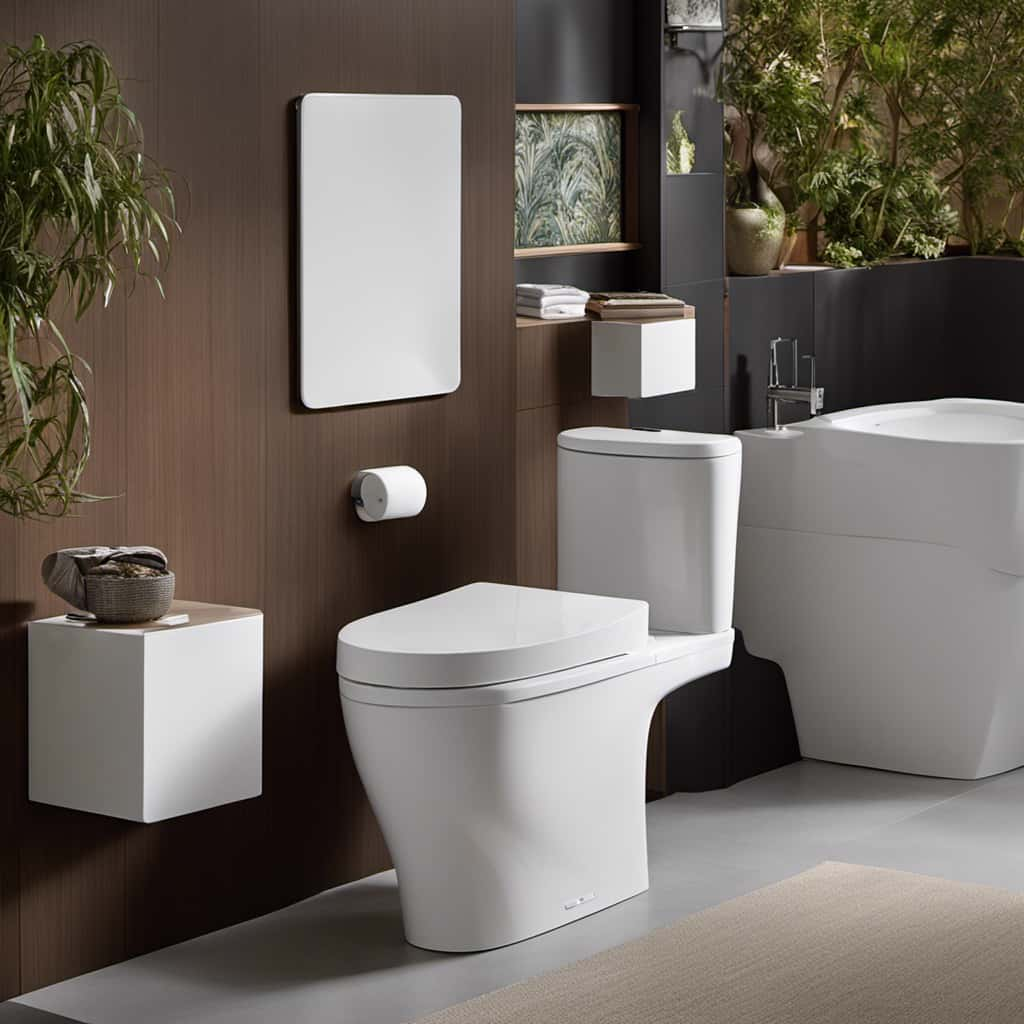
Portable Toilets
Moving forward from the discussion on countries with inadequate sewage infrastructure, let’s now explore the topic of portable toilets and their role in addressing the challenges related to proper waste management and hygiene practices.
Portable toilets play a crucial role in providing sanitation solutions in various situations. Here are four key points to consider:
- Temporary Events: Portable toilet rental is essential for outdoor events like concerts, festivals, and sports matches. They ensure that attendees have access to clean and convenient restroom facilities.
- Construction Sites: Portable toilets are commonly used on construction sites where permanent facilities are unavailable. They help maintain proper hygiene practices and ensure the well-being of workers.
- Disaster Relief: During natural disasters or emergencies, portable toilets are vital in providing immediate sanitation solutions in affected areas, preventing the spread of diseases.
- Outdoor Activities: Whether it’s camping, hiking, or boating, portable toilets are essential for maintaining cleanliness and hygiene in remote outdoor locations.
Septic Tanks
Let’s now delve into the topic of septic tanks and their role in addressing waste management and hygiene practices, particularly in relation to portable toilets.
Septic tanks play a crucial role in waste disposal and treatment, providing an efficient and eco-friendly solution for waste management. When it comes to portable toilets, septic tanks are often used to collect and store waste until it can be properly disposed of or treated.
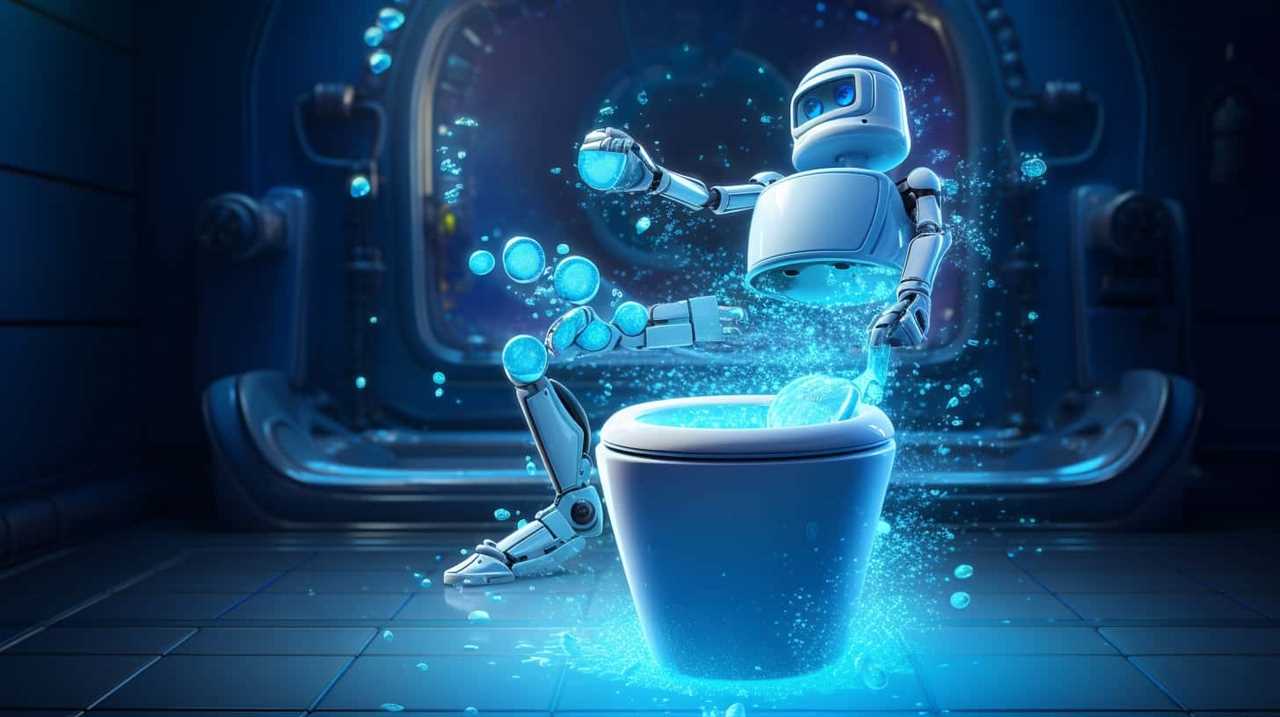
One of the key considerations with septic tanks is their environmental impact. Properly maintained septic tanks can minimize the release of harmful substances into the environment, protecting both human health and ecosystems.
Maintenance requirements for septic tanks include regular pumping, inspection, and proper use of additives to promote the breakdown of organic waste. By adhering to these maintenance practices, septic tanks can effectively manage waste and maintain a healthy environment.
Frequently Asked Questions
How Often Should Public Restrooms Be Cleaned to Ensure Proper Hygiene and Prevent the Spread of Diseases?
We clean public restrooms frequently to maintain proper hygiene and prevent the spread of diseases. Our disease prevention measures include regular cleaning, disinfecting surfaces, and ensuring adequate supply of soap and hand sanitizers.
What Are Some Alternative Options for Disposing of Toilet Paper in Areas With Older Plumbing Systems?
In areas with older plumbing systems, waste disposal can be a challenge. However, there are environmentally friendly alternatives to flushing toilet paper. Let’s explore some options for proper disposal that won’t harm the plumbing.
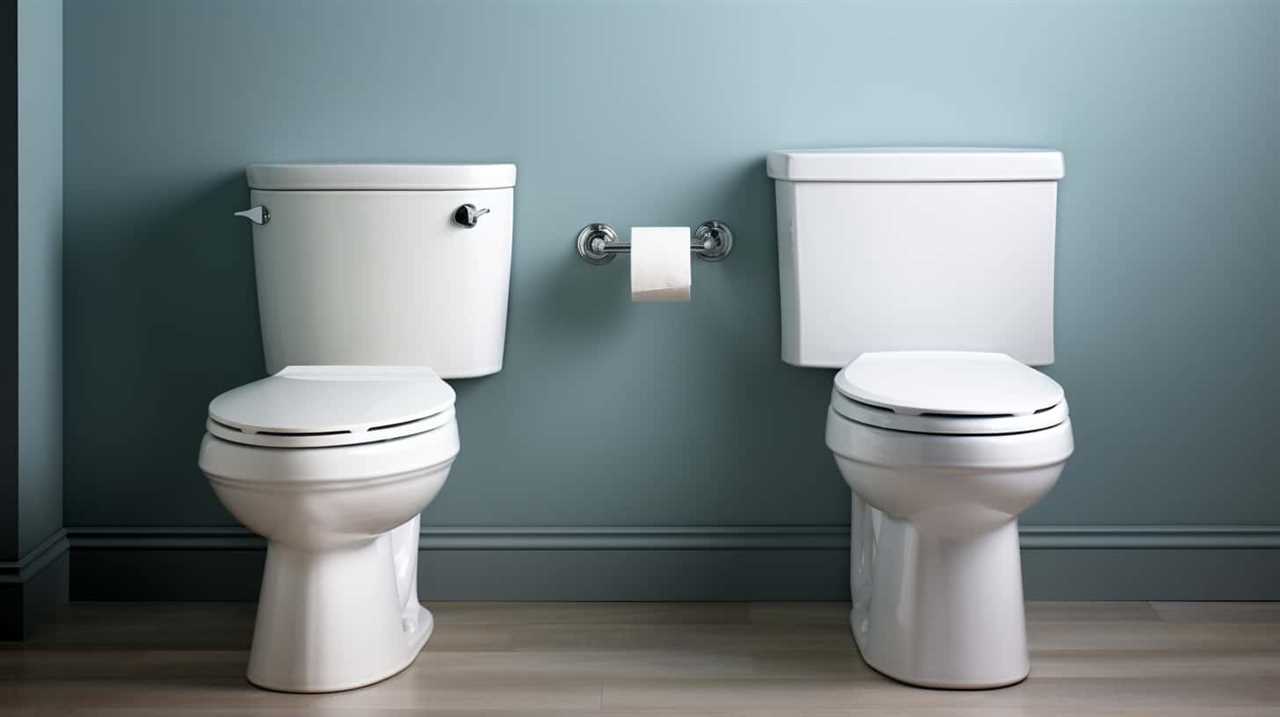
Can You Provide a List of Countries With the Most Advanced Sewage Infrastructure?
A list of countries with the most advanced sewage infrastructure includes Japan, Germany, and Singapore. These countries have invested in modern technology to efficiently manage wastewater. Bidets are another alternative to toilet paper, with benefits like improved hygiene and reduced environmental waste.
How Are Portable Toilets Emptied and Maintained to Ensure Proper Sanitation?
When it comes to portable toilet maintenance, ensuring proper disposal of waste is crucial. We take the responsibility seriously, employing strict protocols to empty and maintain portable toilets, guaranteeing optimal sanitation for everyone.
What Are the Common Problems That Can Occur With Septic Tanks and How Can They Be Prevented or Resolved?
Common septic tank problems include blockages, leaks, and overflows. Regular septic tank maintenance, such as pumping and inspecting, can help prevent these issues. It’s important to follow proper waste disposal guidelines to avoid further complications.
Conclusion
In conclusion, while it may seem strange to some, there are various places where flushing toilet paper isn’t advisable. Public restrooms, older plumbing systems, countries with inadequate sewage infrastructure, portable toilets, and septic tanks all fall into this category.
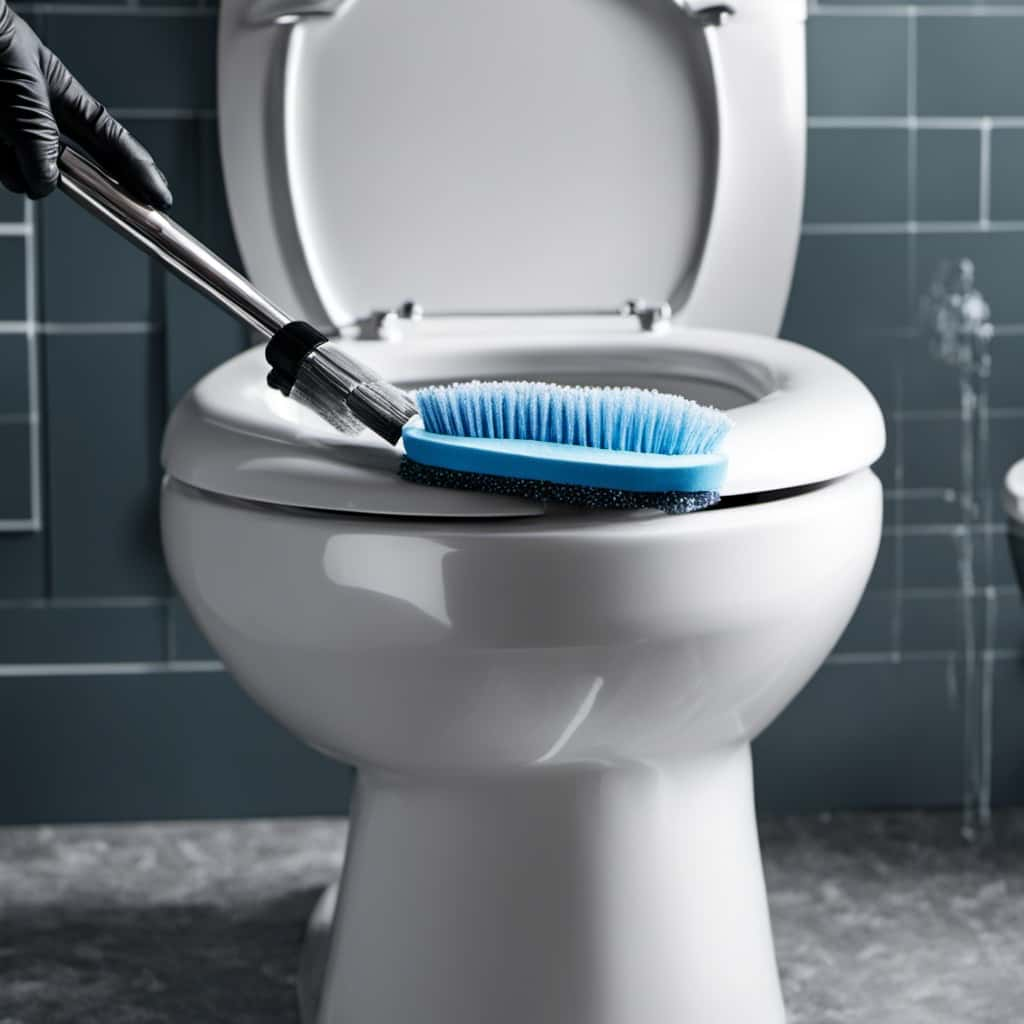
It’s crucial to be mindful of these restrictions to prevent clogging and damage to the plumbing systems. So next time you find yourself in one of these situations, remember to dispose of your toilet paper properly and help keep the pipes flowing smoothly.
With an impeccable eye for detail and a passion for bathroom-related, Ava leads our editorial team gracefully and precisely.
Under her guidance, Best Modern Toilet has flourished as the go-to resource for modern bathroom enthusiasts. In her free time, you might find Ava exploring antique shops and looking for vintage bathroom fixtures to add to her collection.
FAQ - Advanced Bathroom Queries
How Do You Flush the Toilet in Italy

If you have ever been in Italy and faced with a confusing toilet, not sure how to flush it, do not worry! We are here to help you navigate the complexities of Italian toilet flushing systems.
In this article, we will provide a step-by-step guide on how to properly flush a toilet in Italy, highlighting common mistakes to avoid and offering tips for using public restrooms.
Prepare to master the art of toilet flushing in Italy with our informative and precise instructions.
Key Takeaways
- In Italy, there are different types of toilets, including traditional flush toilets, dual-flush toilets for water conservation, bidets, squat toilets in public restrooms, and high-tech toilets with advanced features.
- The flushing mechanisms vary, with traditional flush toilets having a handle or button, dual-flush toilets having separate buttons for full and half flush, bidets having a separate faucet or lever for water control, squat toilets being flushed manually by pouring water, and high-tech toilets having electronic buttons or sensors.
- Water conservation is a priority, with dual-flush toilets offering different flushing options, some toilets having water-saving modes for liquid waste, bidets using less water compared to toilet paper, squat toilets requiring less water for flushing, and high-tech toilets having water-saving features like low-flow flushes.
- Toilet etiquette in Italy includes throwing toilet paper in the bin, using bidets for personal hygiene, maintaining proper squatting posture for effective use of squat toilets, high-tech toilets having additional features like heated seats or air dryers, and leaving the toilet clean and tidy being considered polite.
Types of Toilets in Italy
In Italy, we commonly encounter both manual and automatic toilets, with manual flushes being more prevalent. Historical toilets in Italy have played a significant role in shaping the country’s bathroom culture.

One unique feature found in many Italian bathrooms is the bidet, which is often located next to the toilet. The bidet is used for personal hygiene purposes and is a traditional fixture in Italian households. It provides a convenient way to clean oneself after using the toilet. The bidet’s popularity in Italy can be traced back to its introduction in the 18th century and its association with hygiene and cleanliness.
Today, bidet use is still common in Italy, although modern toilets with bidet functions integrated into the seat are becoming increasingly popular.
Understanding the Flushing Mechanisms
To understand the flushing mechanisms in Italian toilets, let’s explore the different types of flushes commonly found:
- Dual Flush: Many modern Italian toilets are equipped with a dual flush system, allowing users to choose between a partial flush for liquid waste and a full flush for solid waste. This not only promotes water conservation but also helps prevent toilet clogging.
- Push Button: Another common flushing mechanism in Italian toilets is the push button. This type of flush is often found in public restrooms and offers different buttons for different water volumes, ensuring efficient flushing.
- Lever Flush: Traditional Italian toilets may still use the lever flush mechanism, where a lever on the side of the toilet tank is pressed to initiate the flush. This mechanism is straightforward and reliable, but it’s important to be mindful of the amount of force applied to avoid excessive water consumption.
Understanding the different flushing mechanisms in Italian toilets can help prevent toilet flushing problems and promote proper toilet flushing etiquette.
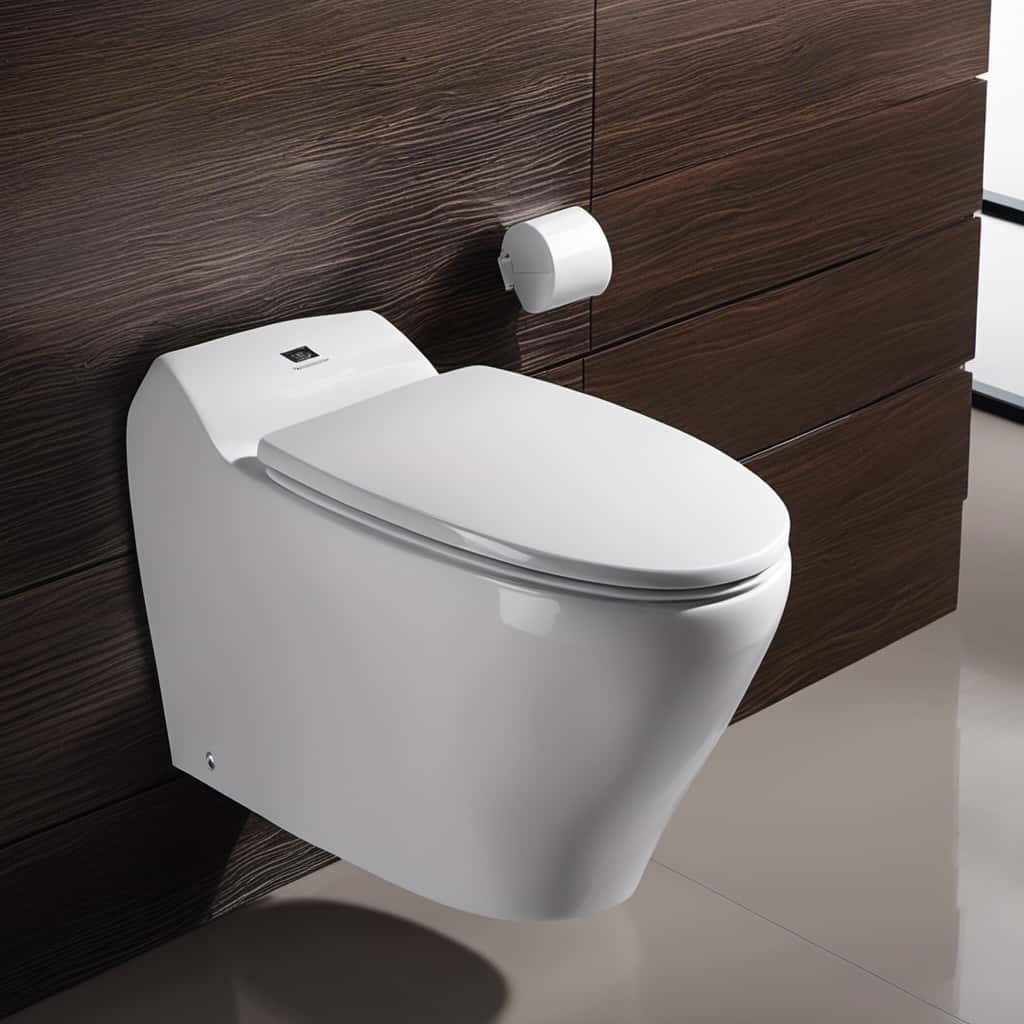
Step-By-Step Guide to Flushing a Toilet
We start by pressing the appropriate button or lever to initiate the flushing process in an Italian toilet. The location of the flush button or lever may vary depending on the design of the toilet. Once pressed, the flushing mechanism activates, releasing a powerful stream of water into the bowl. This water flow helps to remove waste and cleanse the toilet bowl. To ensure effective toilet cleaning and water conservation, it is important to use the appropriate amount of water for each flush. Some toilets may have dual-flush systems, offering a choice between a partial flush for liquid waste and a full flush for solid waste. This option allows for greater water conservation by using less water for liquid waste disposal. Here is a step-by-step guide to flushing a toilet in Italy:
| Step | Action |
|---|---|
| 1 | Locate the flush button or lever |
| 2 | Press the button or push the lever |
| 3 | Allow the flushing mechanism to activate |
| 4 | Ensure effective toilet cleaning and water conservation by using the appropriate amount of water for each flush |
| 5 | Consider using the dual-flush option, if available, for greater water conservation |
Common Mistakes to Avoid When Flushing
One mistake to avoid when flushing a toilet in Italy is failing to ensure proper water conservation by using excessive amounts of water. It’s important to follow toilet flushing etiquette to prevent unnecessary wastage.
Here are three common flushing mistakes to avoid:
- Flushing unnecessary items: Don’t flush items such as sanitary napkins, wipes, or cigarette butts, as they can clog the toilet and cause plumbing issues.
- Overloading the toilet: Avoid flushing large amounts of toilet paper or excessive waste at once, as it may lead to clogging and require professional assistance to fix.
- Ignoring flushing problems: If you notice a weak flush, slow drainage, or frequent clogs, don’t ignore these signs. Troubleshoot common flushing problems promptly to prevent further issues and costly repairs.
Tips for Using Public Restrooms in Italy
When using public restrooms in Italy, it’s important to consider the cleanliness and availability of necessary amenities. Italy has its own cultural differences in bathroom etiquette that visitors should be aware of.
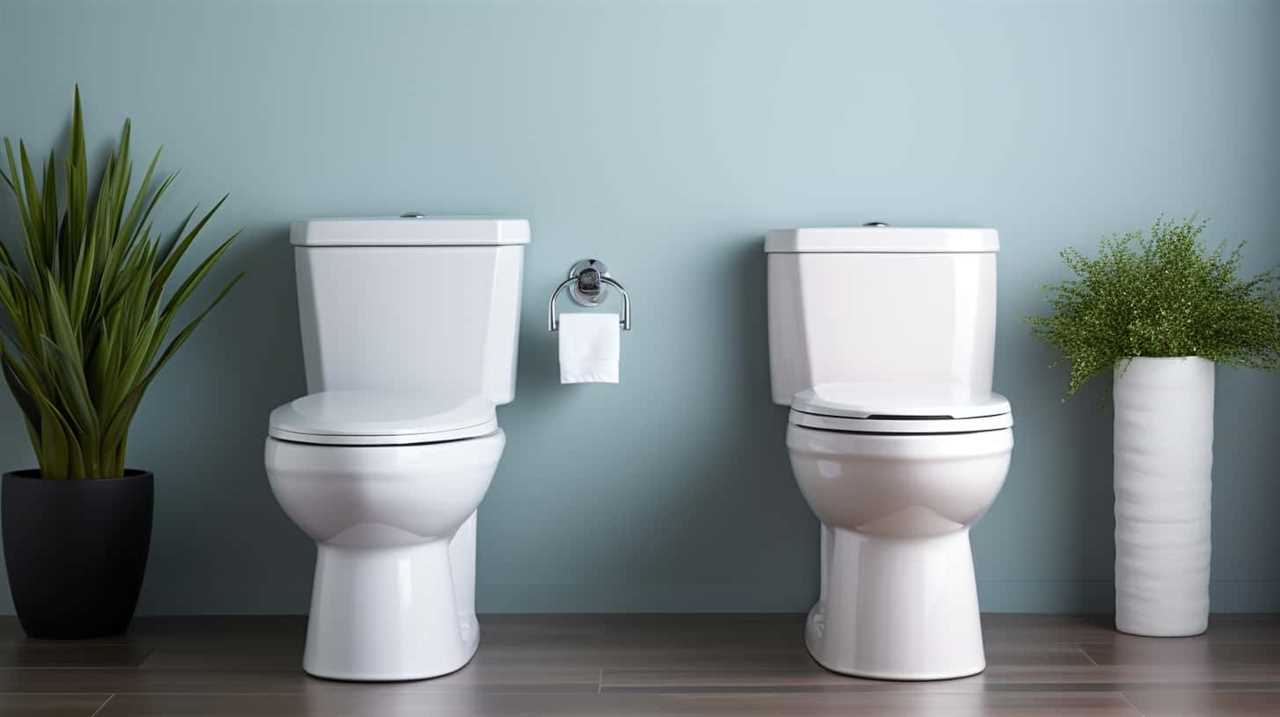
To ensure a pleasant and hygienic experience, here are some tips for finding clean public restrooms in Italy:
- Look for establishments like cafes, restaurants, or hotels, as they usually have better-maintained facilities.
- Carry tissues or toilet paper with you, as some public restrooms may not provide them.
- Be prepared to pay a small fee to use certain public restrooms, especially in busy tourist areas.
- Avoid using public restrooms in train stations or other high-traffic areas, as they tend to be less clean.
Frequently Asked Questions
Are Bidets Commonly Found in Italian Toilets?
Bidets are commonly found in Italian households. They are used for personal hygiene after using the toilet. Bidet usage varies in different regions of Italy, but it is a common fixture in most homes.
What Do the Different Symbols on the Flushing Buttons or Levers Mean?
Different symbols on flushing buttons or levers in Italian toilets indicate various types of flushing mechanisms. Common misconceptions about these symbols can lead to confusion. It is important to understand their meanings for proper operation.
Is It Necessary to Hold Down the Flushing Mechanism for a Longer Time in Italy?
We found that in Italy, it is not necessary to hold down the flushing mechanism for a longer time. However, it’s important to note that certain toilets may have different flushing durations to conserve water.

Are There Any Specific Times When Flushing the Toilet Should Be Avoided in Italy?
There are specific times in Italy when flushing the toilet should be avoided to conserve water. It is important to be mindful of water usage and only flush when necessary, especially during periods of drought or water scarcity.
What Are Some Cultural Etiquettes to Keep in Mind When Using Public Restrooms in Italy?
What cultural etiquettes should we keep in mind when using public restrooms in Italy? In Italian culture, bathroom cleanliness is highly valued. It’s important to properly dispose of toilet paper in the designated bins provided.
Conclusion
In conclusion, mastering the art of flushing a toilet in Italy is like unlocking a hidden treasure. With various types of toilets and unique flushing mechanisms, it’s essential to understand the intricacies involved.
By following our step-by-step guide and avoiding common mistakes, you’ll navigate the waters smoothly. Whether you’re in a public restroom or your own private oasis, these tips will ensure a seamless experience.
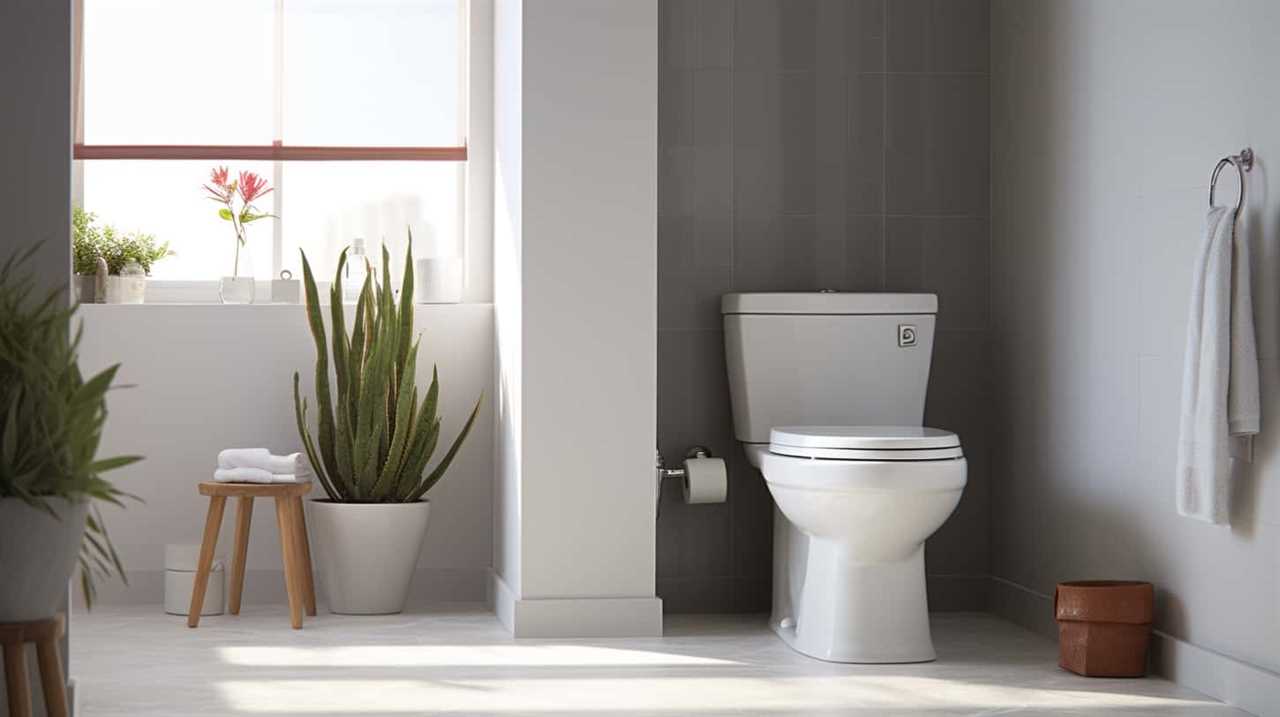
Embrace the challenge and conquer the flushing game with finesse.
With an impeccable eye for detail and a passion for bathroom-related, Ava leads our editorial team gracefully and precisely.
Under her guidance, Best Modern Toilet has flourished as the go-to resource for modern bathroom enthusiasts. In her free time, you might find Ava exploring antique shops and looking for vintage bathroom fixtures to add to her collection.
FAQ - Advanced Bathroom Queries
Best Toilet Brand

We have thoroughly searched the market to discover the top toilet brands for you. Whether it’s American Standard, Kohler, Toto, Delta, or Gerber, we have all the insider details you require.
Picture this: a bathroom oasis, where every flush is powerful, every seat is comfortable, and every fixture is reliable. Our expertise and unbiased research have led us to these top contenders.
Get ready to elevate your bathroom experience with the best toilet brand on the market.
Key Takeaways
- American Standard offers a wide range of options for residential and commercial use, while Gerber offers a wide range of models to cater to different needs and preferences.
- Gerber toilets are known for their reliability and durability, with minimal maintenance and repairs needed, while American Standard focuses on advanced flushing technology for efficient water usage.
- Gerber toilets are praised for their water efficiency and are certified by WaterSense for their water-saving capabilities, while American Standard is known for its innovative technologies like EverClean and WaterSense certification.
- Gerber toilets are generally more affordable compared to American Standard, and customers have praised Gerber toilets for their excellent performance and value for money.
American Standard
In our opinion, American Standard is the top choice for a reliable and high-quality toilet brand. When comparing American Standard’s toilet models for residential and commercial use, it’s clear that they offer a wide range of options to suit different needs.

For residential use, American Standard provides toilets with advanced flushing technology that ensures efficient water usage without compromising on performance. These models also come in various designs and sizes to fit any bathroom aesthetic.
On the other hand, American Standard’s commercial toilet models are specifically engineered to withstand heavy usage and have features like powerful flushes and easy maintenance. This demonstrates the brand’s commitment to providing durable and efficient solutions for both residential and commercial settings.
With a history spanning over 140 years, American Standard has continuously innovated in the toilet industry. They’ve introduced groundbreaking technologies such as EverClean, a surface that inhibits the growth of bacteria, mold, and mildew. This not only ensures a cleaner and more hygienic toilet but also reduces the need for frequent cleaning.
American Standard has also been at the forefront of water conservation efforts by developing toilets with WaterSense certification, which means they meet strict efficiency standards. This dedication to sustainability and innovation has solidified American Standard’s position as a leader in the toilet industry.

Kohler
When it comes to a reliable and high-quality toilet brand, Kohler stands out with its impressive range of models for residential and commercial use. Kohler toilets are known for their innovative features and superior performance.
Here are some key features that make Kohler toilets a popular choice among consumers:
- Efficient flushing system: Kohler toilets are equipped with powerful flushing mechanisms that ensure effective waste removal, preventing clogs and reducing water usage.
- Comfort height: Many Kohler models feature a comfort height design, which offers a chair-like seating position for added comfort and ease of use.
- Dual-flush technology: Some Kohler toilets come with dual-flush options, allowing users to choose between a full flush for solid waste and a partial flush for liquid waste, resulting in water savings.
- Easy installation: Kohler toilets are designed for easy installation, with clear instructions and user-friendly features that simplify the process.
- Wide range of pricing options: Kohler offers a variety of toilet models at different price points, making it possible to find a suitable option for every budget.
Whether you’re looking for efficiency, comfort, or affordability, Kohler toilets have a model to meet your needs.
Toto
Let’s now shift our focus to Toto, another leading toilet brand that offers exceptional features and performance. When comparing Toto to American Standard, Toto often comes out on top in terms of innovative technology and water efficiency.
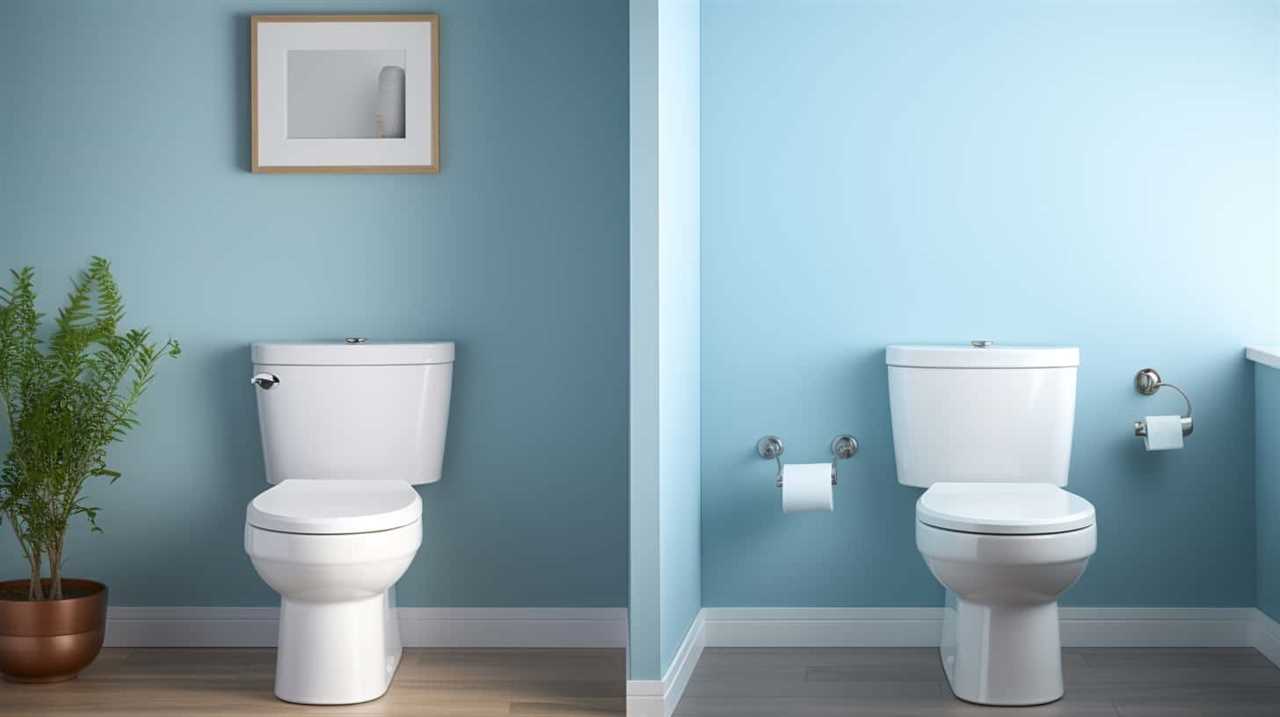
Toto toilets incorporate advanced flushing systems like the Tornado Flush, which uses centrifugal force to create a powerful and efficient flush. In terms of design, Toto offers a wide range of styles and finishes to suit any bathroom decor.
When comparing Toto to Kohler, both brands are known for their quality and reliability. However, Toto is often praised for its superior flushing performance and water-saving features. With Toto, you can expect a toilet that not only looks great but also delivers exceptional performance.
Now, let’s move on to the next section and discuss the brand Delta.
Delta
We’ve found three major factors that make Delta a top toilet brand.
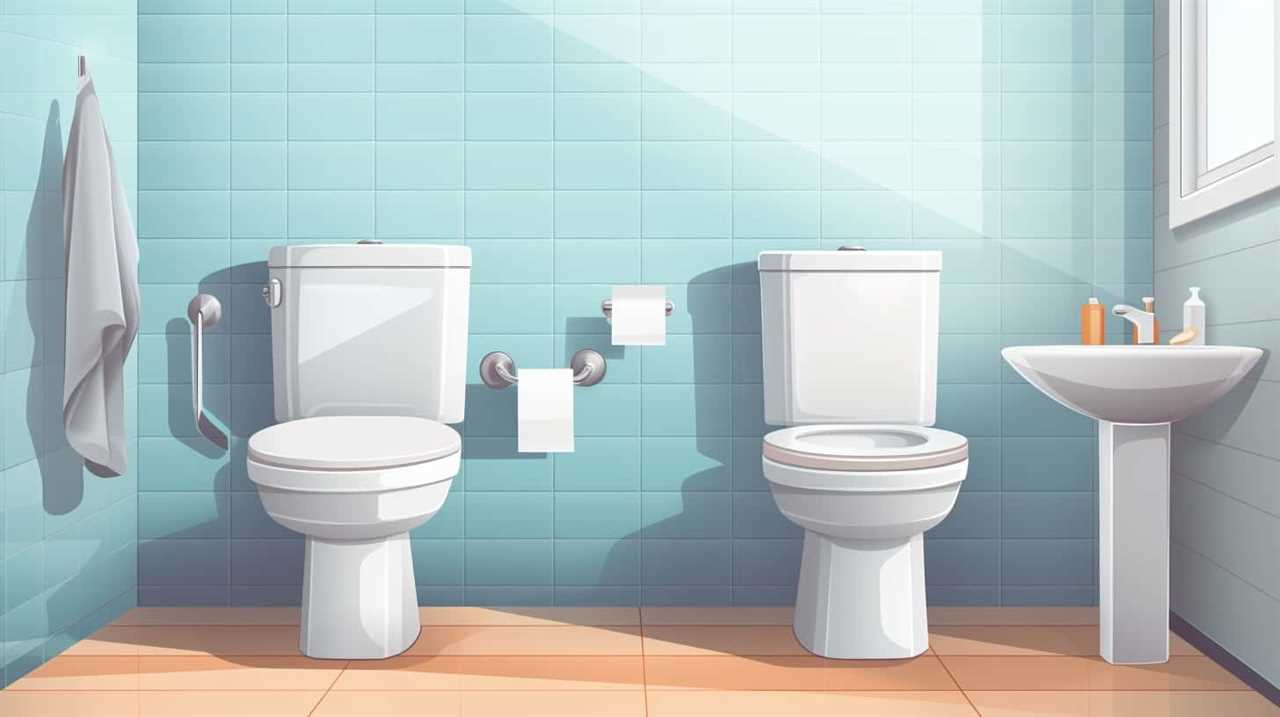
- Delta toilets are known for their exceptional durability and reliability. The materials used in their construction are of high quality, ensuring a long-lasting product.
- Delta toilets offer innovative features that enhance the user experience. From efficient flushing systems to easy-to-clean designs, Delta toilets are designed with the user in mind.
- Delta toilets are backed by a strong warranty and excellent customer support. This ensures that any issues or concerns are addressed promptly and efficiently.
When comparing Delta to other brands, it’s clear that Delta stands out in terms of quality, innovation, and customer satisfaction. Their toilets consistently outperform competitors in terms of durability and functionality.
With its superior features and outstanding performance, Delta proves to be a top choice for those seeking a reliable and high-quality toilet.
Now, let’s move on to discuss another top toilet brand: Gerber.
Gerber
Moving on to Gerber, another top toilet brand, we find that they offer their own unique set of features and qualities. Gerber toilets are known for their reliability, durability, and water efficiency. They have a wide range of models that cater to different needs and preferences. To provide a comprehensive understanding of Gerber toilets, let’s compare them to American Standard, one of their main competitors.
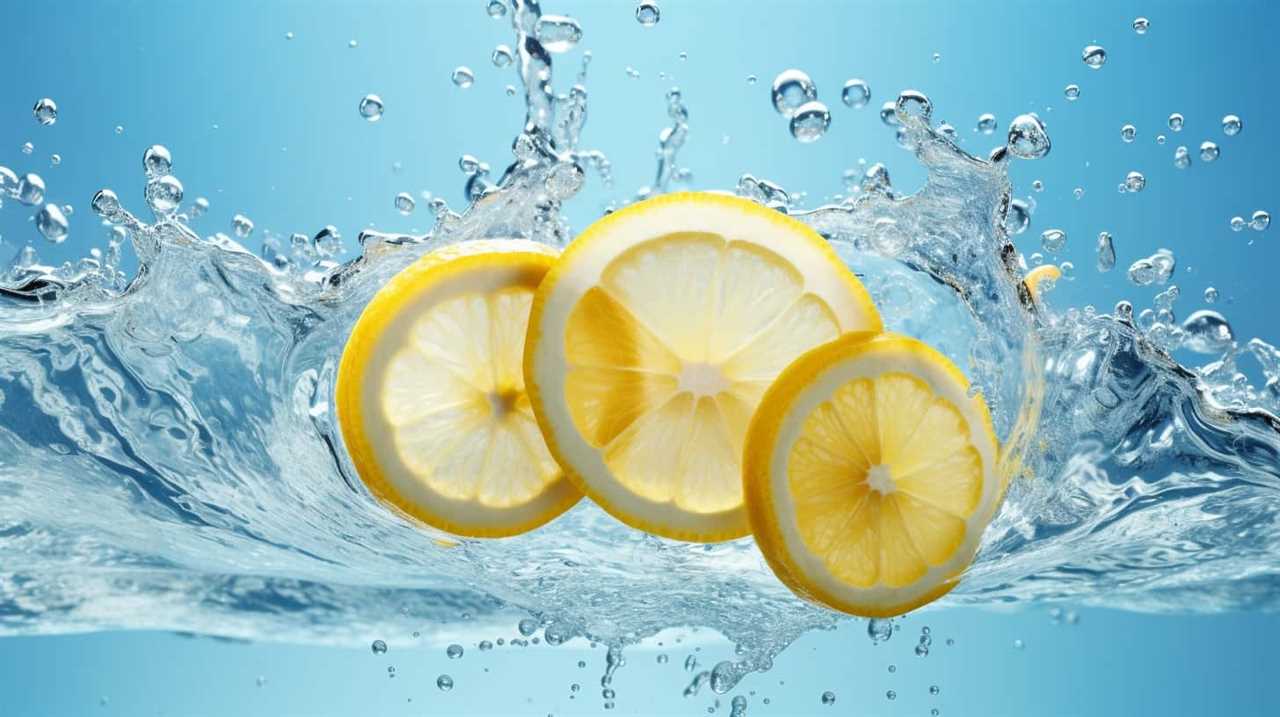
Below is a table that highlights the key differences between Gerber and American Standard toilets:
| Gerber | American Standard |
|---|---|
| Strong flush power | Powerful flush system |
| Water-saving technology | Efficient water usage |
| Affordable pricing | Higher price range |
Based on gerber toilet reviews, customers have praised Gerber toilets for their excellent performance and value for money. However, when comparing Gerber vs American Standard, it ultimately comes down to personal preference and specific requirements. Both brands have their own strengths and can be trusted for their quality craftsmanship.
Frequently Asked Questions
What Is the Average Lifespan of a Toilet Manufactured by American Standard?
On average, the lifespan of an American Standard toilet is around 15 to 20 years. To maximize its longevity, regular maintenance is crucial. Here are some tips: keep it clean, avoid using harsh chemicals, and promptly fix any leaks.
Does Kohler Offer Any Eco-Friendly or Water-Saving Toilet Models?
Yes, Kohler offers a range of eco-friendly and water-saving toilet models. They have innovative options that help conserve water while still providing efficient flushing capabilities. These toilets are a great choice for those looking to reduce their environmental impact.
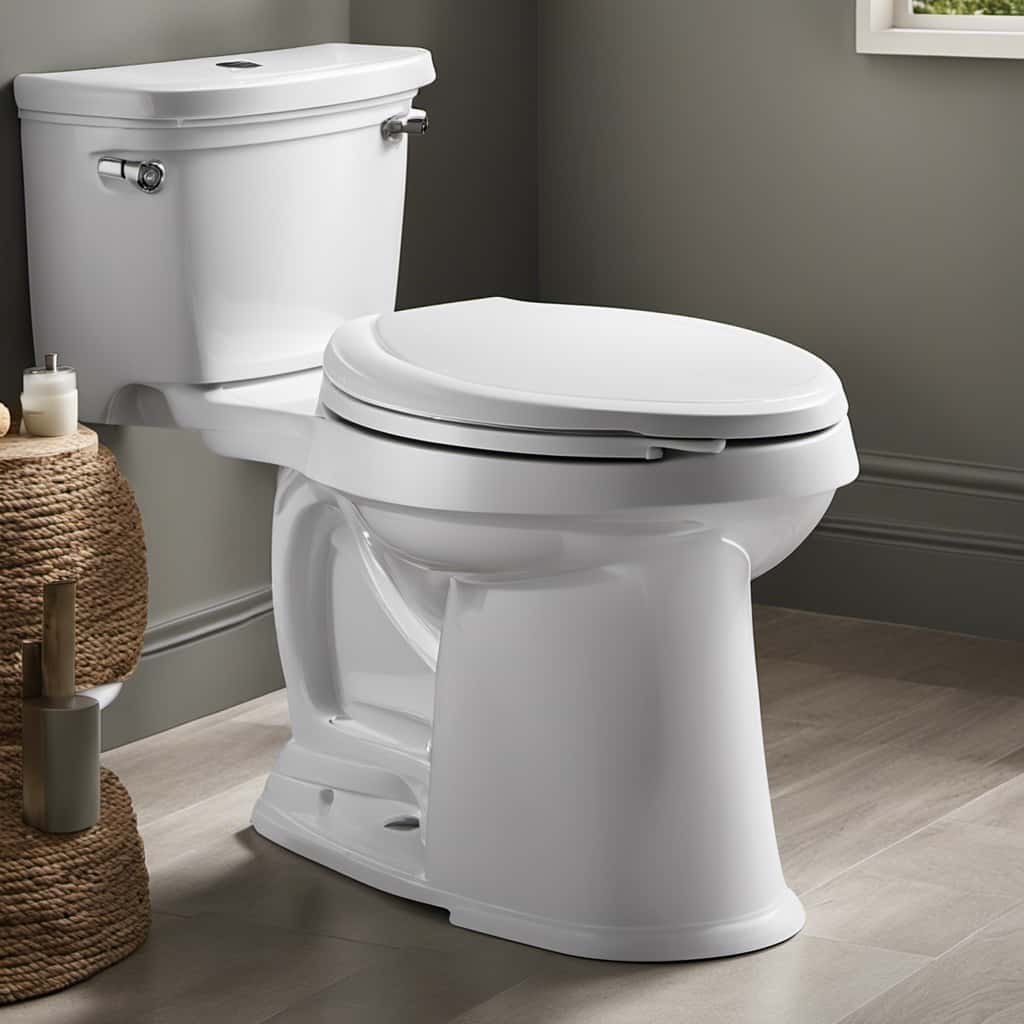
Are Toto Toilets Suitable for Small Bathrooms With Limited Space?
Toto toilets are suitable for small bathrooms with limited space due to their compact dimensions and space-saving options. They offer a range of toilet models designed specifically for maximizing space while maintaining functionality and comfort.
Can Delta Toilets Be Easily Installed by Homeowners Without Professional Assistance?
Delta toilets can be easily installed by homeowners without professional assistance. However, it is important to follow the Delta toilet installation guide and consider the pros and cons of DIY toilet installation.
What Is the Warranty Period Offered by Gerber for Their Toilet Products?
The warranty period offered by Gerber for their toilet products and customer reviews are important factors to consider when determining the quality and reliability of their toilets.
Conclusion
In conclusion, when it comes to choosing the best toilet brand, American Standard, Kohler, Toto, Delta, and Gerber stand out as top contenders.

Like a symphony of efficiency, these brands harmonize quality, durability, and innovation, ensuring a seamless bathroom experience.
Whether you seek sleek aesthetics, water-saving features, or reliable flushing power, these brands have got you covered.
So, go ahead, take the plunge and elevate your bathroom to new heights with a toilet from one of these trusted manufacturers.
With an impeccable eye for detail and a passion for bathroom-related, Ava leads our editorial team gracefully and precisely.
Under her guidance, Best Modern Toilet has flourished as the go-to resource for modern bathroom enthusiasts. In her free time, you might find Ava exploring antique shops and looking for vintage bathroom fixtures to add to her collection.
-

 Bathroom Enhancements2 months ago
Bathroom Enhancements2 months agoWill Hot Bath Lower Blood Pressure
-

 FAQ - Advanced Bathroom Queries3 months ago
FAQ - Advanced Bathroom Queries3 months agoWhich Countries Use Bidets the Most
-

 Reviews1 month ago
Reviews1 month agoLDian Smart Toilet Review [2024]
-

 Reviews2 months ago
Reviews2 months agoKohler Innate Smart Toilet Review [2024]
-

 Reviews2 months ago
Reviews2 months agoKohler NUMI 2.0 Smart Toilet Review [2024]
-

 Reviews2 months ago
Reviews2 months agoCANEST Smart Toilet Review: The Ultimate Bathroom Upgrade [2024]
-

 Toilet Types3 months ago
Toilet Types3 months agoAre Bleach Tablets Bad for Your Toilet
-

 Reviews2 months ago
Reviews2 months agoWoodbridge B0970S Smart Bidet Toilet Review [2024]






















